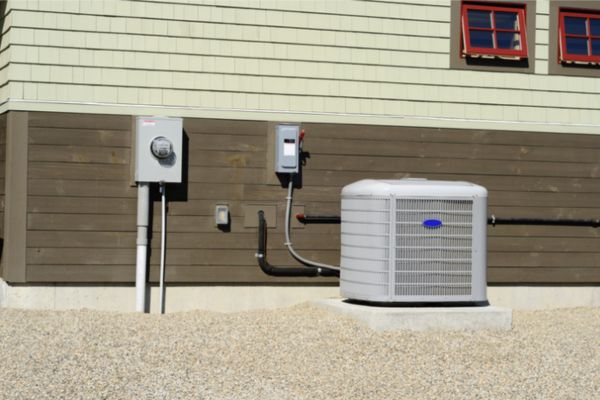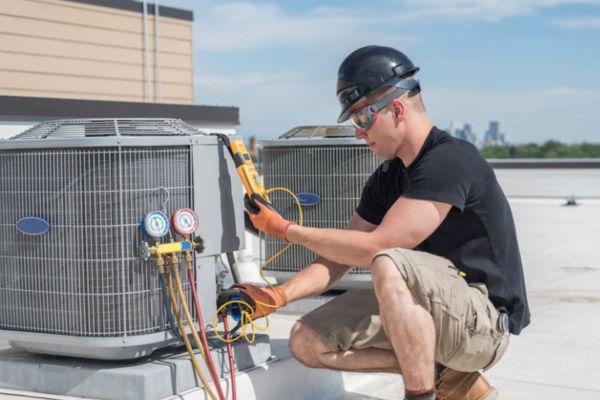Choosing the right HVAC system is not only about comfort but also about efficiency and cost savings in the long term. With rising energy costs, having a system that suits your home’s unique needs can make a noticeable difference in monthly bills and environmental impact. By comparing split and packaged systems, you can identify which system aligns with your energy savings, space usage, and overall comfort goals.

Split HVAC System: How It Works and Why It’s a Popular Choice
A split HVAC system is one of the most common types in residential homes due to its energy efficiency and flexibility. This system has two major components: an outdoor cabinet containing the compressor and condenser, an indoor cabinet with the evaporator, and a furnace or heat pump. These components are connected through refrigerant lines to cool and heat your home effectively.
One of the biggest benefits of a split system is its energy efficiency. With SEER (Seasonal Energy Efficiency Ratio) ratings typically ranging from 13 to 23, split systems offer excellent energy-saving potential. While a higher SEER rating usually means a higher upfront cost, it translates to lower energy bills over the system’s lifetime. This makes split systems ideal for homeowners who prioritize energy savings and are willing to invest upfront for long-term benefits.
However, installation for split systems can be more labor-intensive and costly. Because it requires both an outdoor and an indoor unit, the process involves precise placement, refrigerant charging, and possibly ductwork replacement. Many experts recommend updating or sealing ductwork with a split system installation, as air leaks can impact the unit’s efficiency. Although the initial installation may cost more, the efficiency benefits often compensate for this over time, especially in homes with adequately sealed ducts.
Packaged HVAC System: A Convenient, Space-Saving Solution
If you’re short on space or need an all-in-one solution, a packaged HVAC system might be better. Unlike split systems, a packaged unit consolidates all major components—compressor, condenser, and evaporator—into a single outdoor cabinet. This outdoor unit is typically placed on a slab beside the house or mounted on the roof, freeing up indoor space.
Packaged systems are beneficial for homes with limited indoor space, such as older or mobile homes, where creating room for an indoor cabinet could be challenging. Some models also include heating options, like a natural gas furnace or electric heating coils, eliminating the need for a separate heating system. The compact design and factory assembly ensure consistent quality, reducing the chance of errors during installation.
With a pre-charged refrigerant and outdoor-only setup, packaged systems typically have lower installation costs. However, they are generally less energy efficient than split systems, with SEER ratings ranging between 10 and 18. A packaged system may be ideal for homeowners prioritizing convenience and space efficiency over maximum energy savings. However, it’s essential to consider that, due to its outdoor placement, this type of system is more exposed to weather and potential wear from wildlife, which could impact longevity and performance.
Key Considerations for Your Choice
Choosing between a split and packaged HVAC system ultimately depends on your home’s structure, space, and energy efficiency goals. Consider the following factors before making your decision:
- Home Size and Layout: A split system may work well if you have ample space for an indoor cabinet. For homes where space is tight, packaged systems offer a compact solution.
- Installation Needs: A split system might require additional ductwork updates, while a packaged system is often quicker to install, saving you on labor costs.
- Energy Efficiency Goals: A split system with a higher SEER rating could yield significant long-term savings if you’re focused on lowering energy costs and environmental impact.
- Budget and Long-Term Savings: Though a split system may cost more to install, its higher efficiency often pays off over time. Packaged systems have lower upfront costs but may lead to higher energy expenses.
Conclusion
Deciding on an HVAC system requires balancing your home’s unique needs with your budget and energy-saving goals. Split systems offer greater energy efficiency but may involve higher installation costs, while packaged systems provide convenience and save space. By carefully evaluating your home’s layout, energy priorities, and budget, you can choose to enhance your comfort while keeping energy costs manageable. Selecting the right HVAC system ensures a comfortable home environment and long-term savings that make the investment worthwhile.


